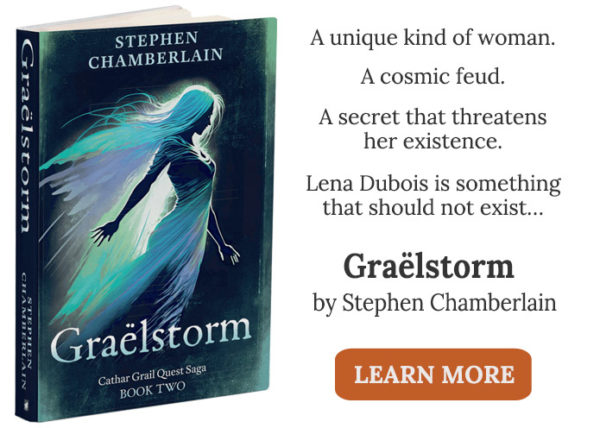“It doesn’t stop being magic
just because you know how it works.”
― Terry Pratchett, The Wee Free Men
Fantasy is a genre steeped in the supernatural. It is literature of imagination, the realm of possibility. There can be wizards and elves, vampires and dragons, tyranny and malevolence. Fantasy places no bounds on the invention of worlds. And this raises challenges for writers of speculative fiction. How do you persuade readers to let go of reality? How do you draw them into your make-believe world and keep them there?
Truth is, writers don’t have to convince readers that their world-building is real. When we open a book or watch a film, we know these stories are made up. Rather, fiction relies on what Coleridge called the suspension of disbelief to coax readers to overlook pretence and engage with the fiction.
Plausibility
Suspension of disbelief is a particular challenge when it comes to magic or the supernatural. Such things are irrational; they defy laws of physics. In bygone days, the supernatural was a part of everyday life. People believed it influenced the real world until the Enlightenment and science swept that away. Now fantasy asks its readers to make a leap of faith that something beyond the mundane could exist. Overcoming this barrier is not about proof; it is about establishing plausibility.
Credibility starts with the story’s premise and the writer’s world-building skills. It isn’t enough that these elements are coherent; there should be enough reality in the setting for the reader to relate to the story. In a nutshell: the more the fictional world mirrors our own, the easier it is to suspend the reader’s disbelief. Take Tolkien — his Middle-earth is a masterpiece of world-building, full of fantastical races. But its geography and cultures, the characters’ instincts and foibles, are familiar. It has a human angle; there is a semblance of truth.
Yet premise and world-building only set up the illusion. Suspension of disbelief must be maintained until the end of the story. This is achieved through the art of storytelling — by the writer’s depiction of the supernatural as seen through characters’ eyes, and by showing their reactions to it. Such scenes may not be real, but they need to be realistic. One small slip, and the illusion is lost.
The more reality-based the fictional world, the more unreal its supernatural elements will appear, and the harder a writer must work to suspend readers’ disbelief. Nowhere is this more important than in portal stories, where characters from one reality end up in another to be confronted by the supernatural — be it elves or wizards, super powers or magic. Tolkien kept his imaginary world apart from ours. There is no crossover, no interaction. But the worlds of C.S. Lewis and Philip Pullman may be accessed from the real world via a portal. Fantasy and the real world intrude upon one another. They are but a step away.
Relatable Characters
More than in any other sub-genre, portal stories must have realistic characters with believable reactions. H.P. Lovecraft said mankind’s strongest emotion is fear, and its oldest kind of fear is of the unknown. In the real world, a believable supernatural encounter would have a harrowing impact. It would screw with the mind; it might be life-changing. Imagine coming face to face with a supernatural manifestation. The experience would overwhelm us with primal emotion — awe and fascination, terror and defencelessness. How many times have you been pulled out of a story because a character doesn’t react to the situation in the way a real person would? A writer cannot ignore feelings the supernatural evokes. To do so risks losing the reader’s engagement, and that’s when a story becomes far-fetched.
Which raises a second challenge for writers. If readers are to buy into the situation, characters cannot fail to acknowledge the impact of something that defies reason. And yet plot waits for no man. Modern-day pace dictates they move to brisk acceptance. Coming to terms with the supernatural cannot take weeks or months. Even so, a character’s reaction cannot be glib. It must be reasonable and proportionate if it is not to appear fake. “You’re a vampire?” just doesn’t cut it; there must be a credible response — perhaps a sharp intake of breath followed by several moments during which, unable to move or speak, the character stands still, staring. Depending on the level of the threat, there might be heart palpitations or hyperventilation.
Credible Reactions
All this plays out in Alan Dean Foster’s novel adaptation of the movie Starman. I’m thinking of the scene when Jenny Hayden encounters the alien for the first time. He has assumed the form of her dead husband:
“She stared into (his eyes)…and found herself growing dizzy. It was all too much to try and handle…She staggered sideways and crumpled to floor…she was no longer afraid, because she had passed beyond fear. There was no strength left in her…she forced herself to move, willed her muscles to function as she scrambled along the wall and away from the thing that looked like Scott.”
After shock would come doubt that the experience is real. The supernatural challenges logic. The character should enter denial: “This can’t be happening. It can’t be.” This phase can’t last long, but it needs to be there. Back to the Starman scene: Jenny has dropped her gun, which the Starman picks up and points at her:
“Her mouth worked, but no words came forth. She still could not understand, could not relate to the figure that stood near her, but the gun was something else again. The gun she could relate to…she huddled in a ball against the knotty pine paneling and waited for whatever might come.”
I remember this scene in the film. Jenny’s reactions were utterly convincing, and the story had me hooked from that moment on.
The final stage in crafting plausibility brings a demand for explanation as the characters struggle to accept what they see. “Who are you? What are you?” cries Jenny, as the Starman thwarts her attempt to escape. This adjustment is important, and the exposition that follows is more than an info dump. Without it, there can be no acceptance, and a character cannot confront forces they don’t believe to be real.
Crafted well, these stages can play out within a single page — you only need to read Erin Morgenstern’s wonderful novel The Night Circus to see what I mean. I recommend the scene where Marco reveals his magical abilities to Isobel. The supernatural here is unthreatening and gently evoked, so the reaction is muted. But each of the above stages is skillfully shaped. For more blood-curdling scenes involving the supernatural, read Michel Paver’s polar ghost story, Dark Matter. It is full of vivid imagery, malevolent force, and relatable fear.
Inciting a Willing Suspension of Disbelief
And so, to the moral of this piece: The key to suspension of disbelief is more than the story line. It requires convincing characters with plausible reactions. There should be shock, denial, explanation, and acceptance. Books are windows into imaginary worlds where just about anything can go. But suspension of disbelief is a big ask, and if writers invoke the supernatural they must deliver realistic reactions. Man’s primal emotions are too powerful to ignore.

Stephen Chamberlain is the author of the fantasy novel Graëlfire. He draws inspiration from the impact of landscape on myth, and the association of liminality with the supernatural and magic. Stephen lives in Switzerland.



